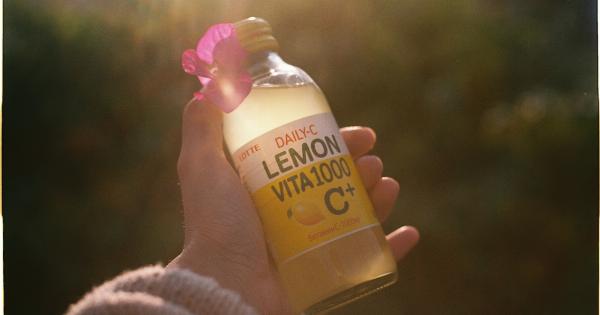Solariums, also known as tanning beds or sunbeds, have gained popularity among individuals who desire a tanned complexion. However, these artificial sources of UV radiation are not without risks.
The World Health Organization has classified solariums as Group 1 carcinogens, which means they are known to cause cancer in humans. Despite this classification, there are still many unsafe solariums being operated, putting individuals at risk of various health complications.
In this article, we will explore the dangers associated with unsafe solariums and shed light on the need for stricter regulations.
The Effect of UV Radiation
UV radiation, whether from the sun or solariums, can be harmful to the skin and overall health. The two types of UV radiation emitted by solariums are UVA and UVB.
UVA rays penetrate deep into the skin and are responsible for tanning, but they also contribute to skin aging and wrinkling. UVB rays, on the other hand, are responsible for sunburn and can directly damage the DNA in skin cells.
Excessive exposure to UV radiation can lead to various health problems, including:.
- Skin Cancer: The primary risk associated with solarium use is a higher incidence of skin cancer. The use of solariums before the age of 35 increases the risk of melanoma, the deadliest form of skin cancer, by 59%. Other types of skin cancer, such as squamous cell carcinoma and basal cell carcinoma, are also more prevalent among individuals who use solariums.
- Melanoma: Melanoma is the most dangerous form of skin cancer, and its rates have been steadily increasing over the years. Studies have shown a clear correlation between solarium use and melanoma, even after adjusting for other risk factors such as sun exposure.
- Eye Damage: UV radiation can also harm the eyes. Prolonged exposure to UV rays can cause cataracts, pterygium (a growth on the eye’s surface), and even damage to the retina.
- Suppression of the Immune System: UV radiation weakens the immune system, making individuals more susceptible to infections and other diseases.
- Premature Aging: The skin ages prematurely due to repeated exposure to UV rays, leading to wrinkles, sagging, and loss of elasticity.
- Vitamin D Deficiency: While exposure to sunlight helps the body produce vitamin D, relying on solariums for vitamin D synthesis is not recommended. The risks associated with solarium use far outweigh any potential benefits in terms of vitamin D production.
Unsafe Solarium Practices
Despite the well-established risks associated with solarium use, many establishments continue to operate unsafe and poorly regulated solariums.
These establishments often neglect basic safety guidelines and fail to provide proper training and education to their customers. Here are some common unsafe practices:.
- Overexposure: Customers are allowed to use solariums for extended periods without the necessary precautions. This increases the risk of severe burns, skin damage, and long-term health complications.
- No Protective Eyewear: Solariums emit intense UV radiation, which can be harmful to the eyes. However, many establishments do not provide or enforce the use of protective goggles, leaving customers vulnerable to eye damage.
- Lack of Maintenance: Solariums require regular maintenance, including changing bulbs and cleaning the beds. Neglecting these maintenance tasks can result in uneven tanning, increased UV exposure, and malfunctioning equipment.
- Minors’ Access: Many jurisdictions have prohibited the use of solariums by individuals under the age of 18 due to the increased risk of skin cancer. However, some establishments ignore these regulations and allow minors to use their facilities.
- Lack of Regulation: In some countries, there is a lack of strict regulations governing the operation of solariums. This allows establishments to operate without proper oversight, leading to unsafe practices and increased health risks for customers.
The Importance of Stricter Regulations
To minimize the risks associated with solarium use, it is crucial to implement stricter regulations and enforce compliance. Here’s why:.
- Public Health Protection: Stricter regulations would ensure that solariums meet safety standards, minimizing the risk of skin cancer, eye damage, and other health complications for users.
- Educating the Public: Regulations can require establishments to provide comprehensive information about the risks of solarium use, emphasizing the importance of moderation and protection.
- Restricting Minors’ Access: Prohibiting minors from using solariums is crucial to protect their long-term health. Stricter regulations would enforce age restrictions and discourage establishments from allowing minors to use their facilities.
- Standardized Safety Practices: Regulations can set clear guidelines for maintenance, hygiene, and sunbed positioning to ensure consistent and safe practices across all solariums.
- Enforcement and Penalties: Stricter regulations backed by effective enforcement mechanisms can deter establishments from operating unsafe solariums. Penalties for non-compliance should be significant enough to discourage negligent behavior.
Conclusion
Solariums may offer a convenient way to achieve a tan, but the risks associated with their use cannot be ignored. The classification of solariums as Group 1 carcinogens by the World Health Organization underscores the severity of these risks.
Stricter regulations are needed to protect the public from unsafe solarium practices, such as overexposure, lack of eye protection, and unrestricted access for minors. It is essential for governments and regulatory bodies to prioritize public health and take necessary actions to minimize the harm caused by solariums.




























